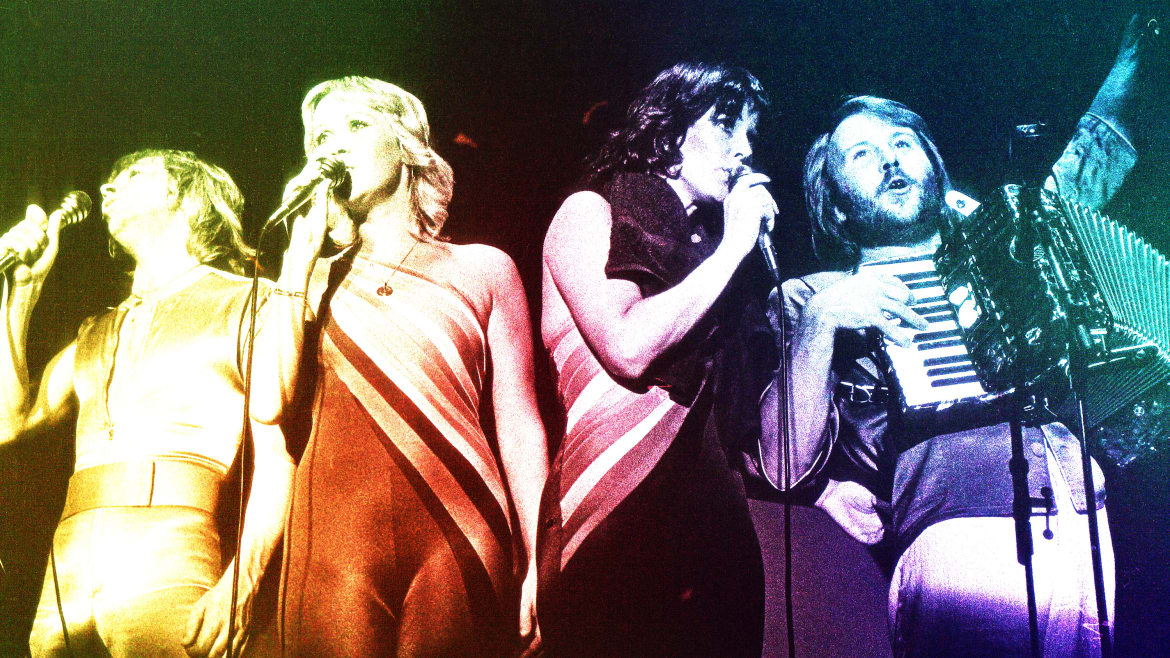 Photo Illustration by Luis G. Rendon/The Daily Beast/Getty
Photo Illustration by Luis G. Rendon/The Daily Beast/GettyIt’s 7:45 p.m. on a Thursday and I’m about to see ABBA live at the Queen Elizabeth Olympic Park in London. Well, not exactly—in fact, the band hasn’t performed in the U.K. capital in over 40 years. Rather, I’ll be seeing holograms, cleverly dubbed “ABBAtars,” of the Swedish supergroup as part of ABBA Voyage, a show that had sold hundreds of thousands of tickets before it even debuted last May.
Nearly a full year after the show premiered, ABBA Voyage is still pulling in massive crowds—I had to get tickets months in advance—attracting fans of all ages from all over the world. It’s been so successful that there have been recent talks to take the ABBAtars on tour. The 90-minute show—which features holograms of the Swedish pop stars, modeled in their likeness from 1977, performing their greatest hits—isn’t the only ABBA attraction making waves. In the U.S., there are all sorts of ABBA-themed parties (I swear there’s at least one a month where I live in Washington, D.C). It begs the question: What makes this band’s music so beloved more than four decades after their debut?
First, a little background on our Swedish superstars: ABBA was formed in Stockholm in 1972 by Agnetha Fältskog, Björn Ulvaeus, Benny Andersson, and Anni-Frid Lyngstad (the band gets its name from the first letters of each member’s name). But the band really “made it” when they won the 1974 Eurovision Song Contest, singing their hit single “Waterloo.” ABBA stayed active for about 10 years, releasing eight studio albums, but eventually broke up in December 1982.

 2 years ago
677
2 years ago
677 
















 English (United States) ·
English (United States) ·